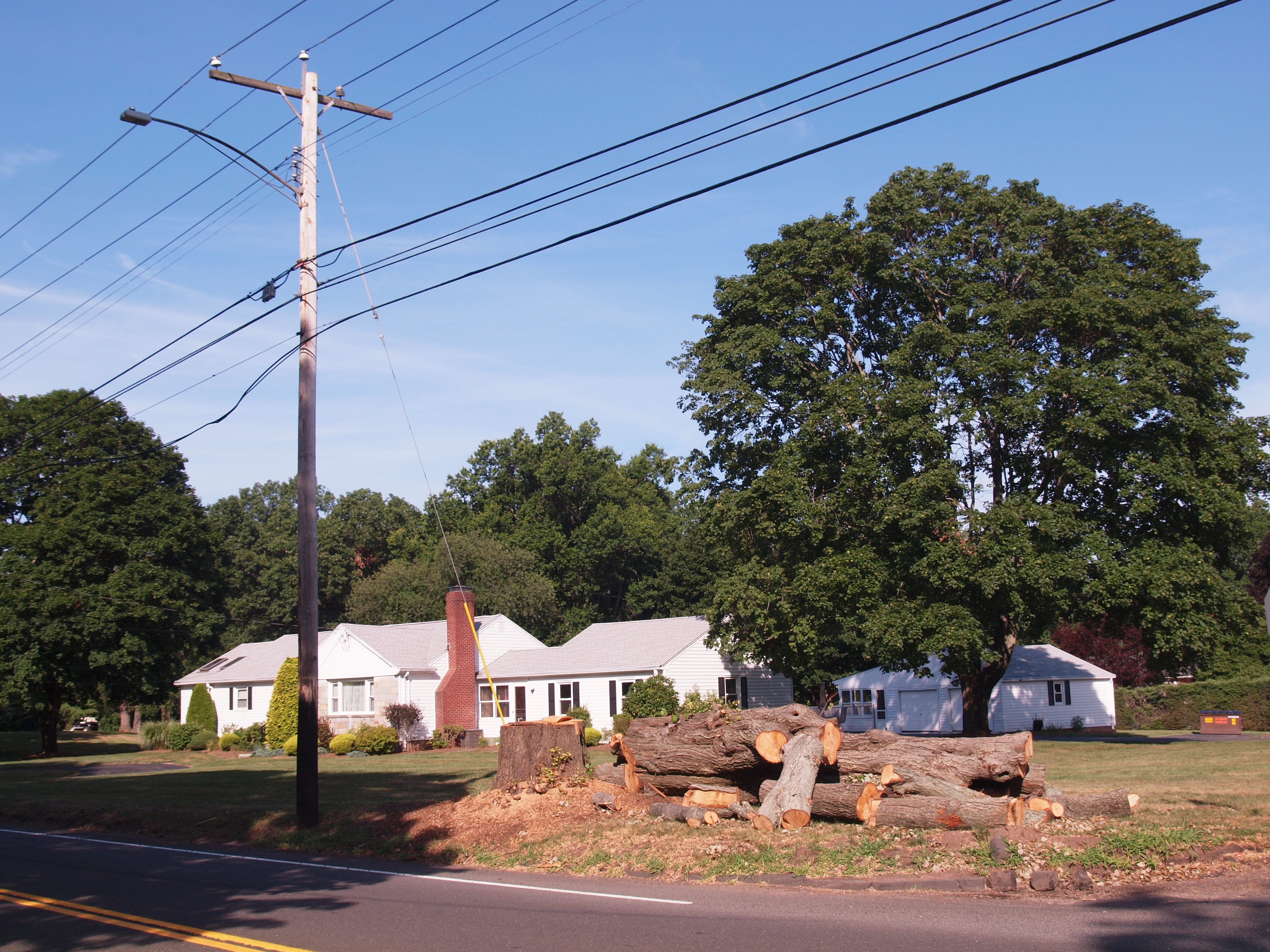Trees and Utilities
Please Note - Safety must be a primary concern when dealing with electricity, electrical wires or any part of the electric distribution system. Trees can also conduct electricity, so any tree that is in contact with any element of the electric distribution system must be treated with great care. Always avoid direct or indirect contact with electrical wires. If you have any concerns about trees in contact with wires, call your electric utility.
In Connecticut, there are 2 major, investor-owned electric utilities, plus 5 smaller, local companies:
-
Eversource - service territory includes 149 cities and towns within Connecticut
-
United Illuminating - service territory includes 17 cities and towns within Connecticut
-
Wallingford Electric - provides electricity to Wallingford and parts of Northford
-
Bozrah Light and Power - now affiliated with Groton Utilities
-
Groton Utilities - provides electrical service within the Town of Groton
-
Norwich Public Utilities - provides electrical service within the Town of Norwich
-
South Norwalk Electric and Water - provides electrical service in parts of the City of Norwalk
The Public Utilities Regulatory Authority (PURA) is statutorily charged with regulating the rates and services of the two investor owned electric utilities, as well as natural gas, water and telecommunication companies.
PURA has provided a full list of contact phone numbers for all 7 of these electric utilities.
Utilities and Existing Trees
Often, questions are raised regarding the vegetation management programs of individual electric utilities. Such questions often revolve around the role of the tree warden (if the tree is on a municipal road), Department of Transportation (if the tree is on a state road), the utility and the adjacent property owner.
Key state laws relating to the utilities' vegetation management programs are:
-
CGS Sec. 16-234 - vegetation management - notice to abutting and private property owners
-
CGS Sec. 23-59 - the powers and duties of tree wardens
-
CGS Sec. 23-65 - permits for cutting or removal
The Garden Club of New Haven has assembled a detailed flowchart outlining the various roles of all involved.
PURA provides regulatory guidance over the vegetation management programs of the two investor-owned utilities (Eversource and UI). Many of these practices are discussed in the Final Report of Docket 12-01-10.
In 2011, in response to the major storms of that year, the DEEP Commissioner convened a State Vegetation Management Task Force. The Final Report of the Task Force has been influential in guiding both PURA and the Legislature with regards to utilities and trees.
Planting New Trees Near Utilities
If you are planning to plant a tree near the overhead electric distribution system, be certain as to ownership of the spot where the tree is to be planted.
-
If the land is municipally-owned, the tree warden must be consulted.
-
If it is state owned land adjacent to a state highway, DOT then has procedures that must be followed.
-
If the land is privately-owned, it is advisable to contact either the utility or the tree warden to get their advice regarding the likelihood of the tree interfering with the road or with the wires in the future.
Always use the Call Before You Dig service before digging holes, even for planting trees. This free service will alert you to the presence of underground utilities.
Right Tree, Right Place
In its Final Report, the State's Vegetation Management Task Force explains the concept of Right Tree-Right Place, along with providing a list of suggested trees.
Eversource provides guidelines for planting a tree in the proper zone, along with a list of recommended trees to plant.
The International Society of Arboriculture also discusses the idea of Right Tree-Right Place. For example, the planting of a small shrub under utility wires would be a better choice than a tree that reaches a mature height of 60 feet. Be aware, as well, as to the future spread of a tree's crown.
UConn's plant database offers a web based tool for selecting trees best suited to a chosen planting location. This includes the ability to select trees for height and for form (that is, canopy spread). These are both factors to consider regarding the likelihood of a tree interfering with overhead electric distribution wires.
Additional Information
Stormwise is a program being developed by the University of Connecticut and the CT Agricultural Experiment Station. It is based on an approach to the maintenance of forested roadsides that balances the trees, utilities and people. The Stormwise program includes partnerships with the utility companies, DEEP, DOT and towns across the state.
The Utility Arborist Association is committed to developing quality management practices regarding trees and utilities. They provide easy to understand information regarding tree trimmings and common utility questions.
For professionals looking to learn more, attending an Electrical Hazard Awareness Program provides hands on experience with utility management and safety. It is critical to understand the risk and hazards associated with utilities. The Connecticut Tree Protective Association offers EHAP training annually.

Tree that had interfered with utility wires on Route 17 in North Haven is removed. The tree in background continues to provide shade to the house.
Trees and Urban Forests: Learn More | Forestry Main Page
Content last updated November 2021

